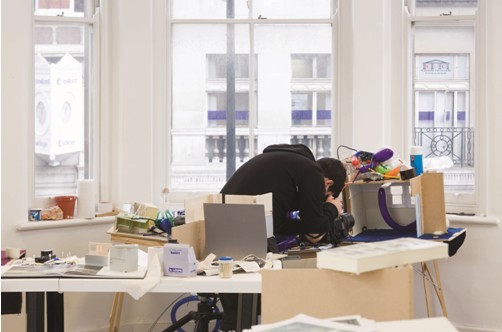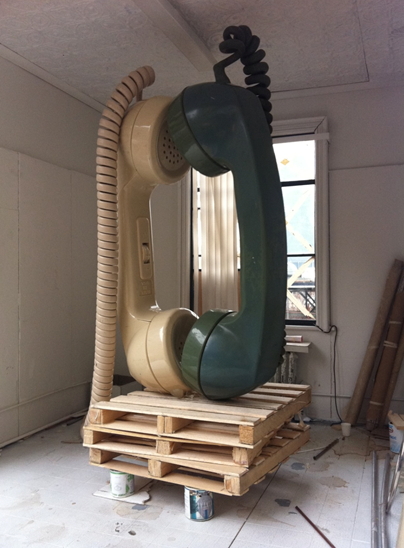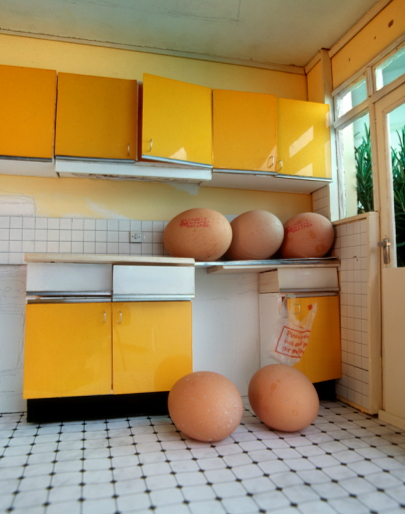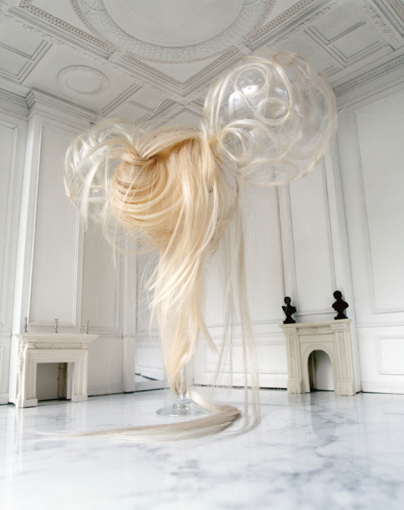
Multiplied Art Fair 2015 London: Petros Chrisostomou
This year’s Multiplied, the UK’s only contemporary editions fair, will take place in mid-October and will be one of the many concurrent shows with Frieze Art Fair in London. Hosted by Christie’s at its Old Brompton Road venue in South Kensington, Multiplied will be the ideal place for art lovers and enthusiasts as well as collectors to find photographs, digital art, prints, 3D multiples and artist’s books. Forty exhibitors comprising galleries, publishers and artists’ collectives from all over the world will feature the works of young and inspiring artists.
We picked the work of British born, New York based artist Petros Chrisostomou showcased this year by LNEdition. Chrisostomou is known for his hybrid miniature environments impregnating life-size quotidian objects. Imbued with a sense of minimalism and reminiscent of Kubrickian aesthetics, his still life photographs transcend the mapping of the unregistered physical human presence within Lilliputian loci. Embarking from a playful stance towards the distortion of perspective and reality, his work engages the viewer in a constant challenge of proportional representation and reasoning of the conscious mind.

I invited Petros Chrisostomou to discuss his work, our transcription is below.
KP: Your work embraces the presence of miniature or, if you wish, micro-environments. What triggered the need to create these habitats?
PCh: I would say that my work deals with environments in a broader sense and not just the micro-environments. It seems that this series of works that deal with the miniatures have been well received and circulated through various media, so this could be the reason that I am generally known for making this type of work. However, my work is grounded in the need to address the conversation of sculptural objects within a given context, and I began to work with larger free standing sculptures, with readily available materials and document these within found spaces. The nature of this necessitates that the work could only exist through documentation and that given the direction of how culture is being influenced through the media; this phenomenon has become important to the way that I wish to direct my viewer to relate to my work. I began to work on the miniatures simultaneously to the larger objects, but I felt that with the miniatures I was able to distort reality and gain more control, or skew perspectives, and also it granted an immediacy and directness to my images. Sometimes I did not have the luxury of having any physical space to display my ideas in, and at the beginning I certainly didn’t have any galleries interested to show my works in either, so the miniatures also became a way of creating my own spaces for my ideas.

KP: What is your relation to architecture? Do you see it through its importance for spatial awareness and organisation or does it impregnate a more poetic dimension for you?
PCh: I’m very drawn to architecture from an existentialist point of view, some aspects of my work relate to my personal history and environments that have influenced my life whilst other areas of my work try to depict an aspirational, or bi-dimensional reality, whilst verging on the poetic or the ridiculous. It is certainly an impulsive characteristic that draws me to interior space, and how my own humanity is perhaps overwhelmed by the understanding of the physical space I am in, and also the sociological positioning that is evident through this.
I try with my photographic works to display the art product as an intervention within the space it is being displayed in, to create a circular dialogue between the space that is being depicted within the image, and also the space which the art object (the photograph) is being witnessed in.
KP: Your work references fashion and interior design glossy magazines. When and how did you decide to employ the particular aesthetics for your narrative?
PCh: I’m assuming you are referring to the works which have the high heeled shoes or the wigs as the subject matter for the photographs. I think that I chose these two series of works for reasons to do with parody. Both of these materials, the shoes and the wigs lend themselves very well to the sculptural language, and as objects they are socially loaded with reference. They go hand in hand with the idea of vanity, which is a subject matter that fashion magazines promote. I’m actually very grateful that these magazines chose to circulate images of my work, as this operates as a vehicle to distribute my images to a much wider audience and one that is not necessarily isolated to the contemporary art world, but to a wider audience beyond that. Going back to this idea of the high heeled shoes, I wanted them to act as a metaphor, a tool which we use to make steps with and at that time I was taking my first real steps into the commercial gallery world. The type of shoe depicted could be worn by somebody to sell an idea of themselves in a ‘particular’ way, much like the idea of an artwork in a gallery context could operate in the same clichéd way, so I wanted to highlight that with this particular series of works. I think that the fashion industry helping to promote this work adds to the irony and the humour in this, so I have been extremely lucky that the media have done their part to add the final ingredient to activate the concept. The wigs I chose to work with from a slightly different perspective, as I felt they had an interesting duality to them. The material is very visceral, and can be read as both seductive yet also grotesque. My work has always tried to deal with paradox in some way or another and so I wanted in this case to use the materiality of hair to create a tension.

KP: You were born in London but currently live in New York. Do you think New York is more receptive towards experimental photography or there is simply a wider audience for professional photographers?
PCh: I came to New York to do a residency and somehow I felt that it was a great environment to exist in as an artist, so for many reasons I decided to stay. One of them being that there is certainly a lot of different creative activity going on, and that it’s possible to meet and also collaborate with people from all different walks of life and different stages in their professional practice. I grew up in London which is also a big city, so I wanted to change my reality and experience something new. I feel that New York has many different tiers and levels of career development and it’s also a place where many people come to from somewhere else, so there is not really an emphasis of where your ethnic or geographical origin is based, or whether that plays a role in who will collect your work, in fact, it works as an advantage to have an exotic background that you can bring to the table and reinforce your practice with.
There are many different gallery districts in New York and not just one egocentric location as you might find in perhaps another large city. You can find great pop up spaces in the Bronx or in Harlem, as well as various places in Queens, Brooklyn and Manhattan too. Many galleries are opening on the Lower East side and some of the large established galleries in Chelsea are also taking note of this and opening second locations there, as it has more credibility than the tired mega money shows that the elite have been prescribing. To answer your question more directly, I think that if many people are passing through the city then numerically it makes sense that there will be more eyes viewing and being interested in photographic work. Whether these numbers determine if the city is naturally a more receptive environment? I’m not sure, but I feel New York is a place where artists of all mediums can feel comfortable to make art and communicate their ideas more freely.
KP: How do you see your art involving in the years to come? Do your future plans involve the active human presence in your photographs?
PCh: I feel like the act of looking is essentially a human presence within any work of art, as it is a two way dialogue between the viewer and the work, so I would say that there has always been human presence in my work. I would never be as obvious as to actually add miniature figures to my photographs, that’s a little bit too didactic for me, as I always keep my photographs devoid of human imagery because I want the person looking at the photograph itself to be the viewer subconsciously inside of the work. I also feel that I am understanding my work a lot better now that I have some distance from my time in Europe, and that I am more independent with my creative process and this has given me the time to pace myself. I have been working on large size sculpture for the past 18 months, and working with a wider group of people and having my work professionally fabricated.
The nature of this process takes much longer to create output, and I can say that I am putting out between three to five works a year now instead of twenty something like I would have done five years ago. I have a solo exhibition scheduled in New York for spring 2016, and this will be the first time that I will show these new pieces as a group. I am looking at this as a project type scenario that I can experiment with something new and see how my audience responds to this work.
I think the line of progression is that in the beginning I made freestanding sculptures with readymade or appropriated objects; objects that I was only able to find. I needed the still life photographic works (that came after these freestanding sculptures) to act as a bridge to highlight specific objects and my interest for them. By using these works as studies, it has allowed me to invert my process by isolating objects and fabricating them as giant sculptures in order to bring to a ‘real’ physical space.
